Queen Elizabeth: How her military ties grew after the Blitz, World War Two
Queen Elizabeth was only 14 when WW2 erupted, and she was bundled off into underground vaults. But she enlisted, and never turned her back on her country.
Royals
Don't miss out on the headlines from Royals. Followed categories will be added to My News.
Queen Elizabeth was strongly connected to the military, and her experience of World War II left her with a deep respect and affection for the armed forces.
The Queen enlisted with the Auxiliary Territorial Service when she turned 18, and learned how to drive and maintain trucks and ambulances.
She lived through the Blitz, and when she became Queen in 1952, she also became the Commander-in-Chief of the British Armed Forces - a ceremonial appointment, but an important one.
She deeply respected those who donned the uniform for their country, and was also a wife, mother and grandmother of those who served.
Until her later years, she wore military uniform and rode horseback at the Trooping the Colour military parade in honour of her birthday, and was named colonel-in-chief of numerous regiments right across the Commonwealth.
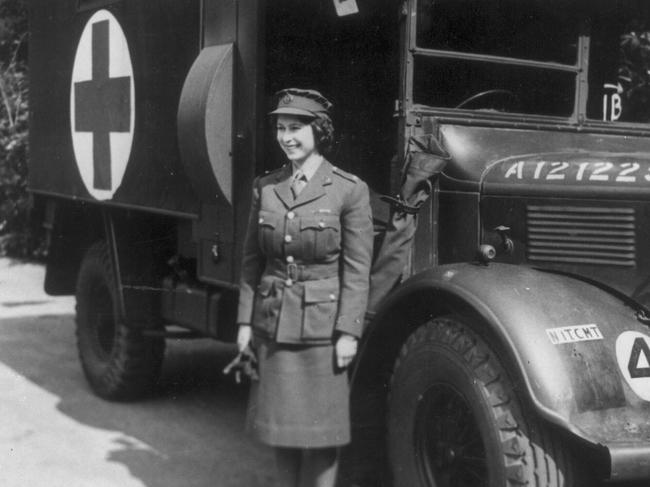
Royal historian Hugo Vickers told News Corp the Queen was one of the last survivors of the war period and had distinct memories of it.
“She spent most of the war at Windsor Castle with her (younger) sister Princess Margaret,’’ he said.
“Princess Margaret used to say that she was surrounded by barbed wire which ‘wouldn’t have kept the Germans out but would have kept us in’.
The princesses were regularly bundled off to the underground vaults as bombs rained down on the Windsor Great Park.
Mr Vickers said the Queen had a number of friends who went to war and she, like many of her generation, had lost friends and relatives.
Her uncle, Prince George, the Duke of Kent, died in a plane crash in Scotland in 1942.
A member of the Royal Air Force, his death marked the first time in 500 years a member of the British royal family had been killed in active military duty.
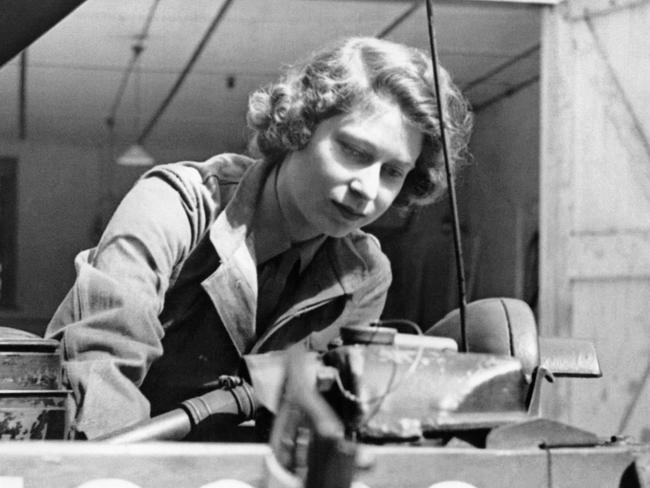
Mr Vickers said the Queen’s war experiences “would have given her a sort of stoicism which later generations to some extent lacked.
“Once you’ve been through all that, you’ve heard the Blitz and you’ve lived through the bombings, you’ve seen everybody rallying together and she of course did her bit in the ATS, she was trained changing sparking plugs and that sort of stuff,’’ he said.
“Seeing her parents and hearing their stories about visiting East End and Coventry and all the places that were bombed and coming out the other side.
“Also marrying a naval officer (Prince Philip) who served at Cape Matapan (site of a significant naval battle off the coast of Greece), who was mentioned in dispatches and been out in the Far East, that was a generation which had spent its most formative years in and around khaki uniforms.
“It was a very, very big part of her life and would have had a huge effect.’’
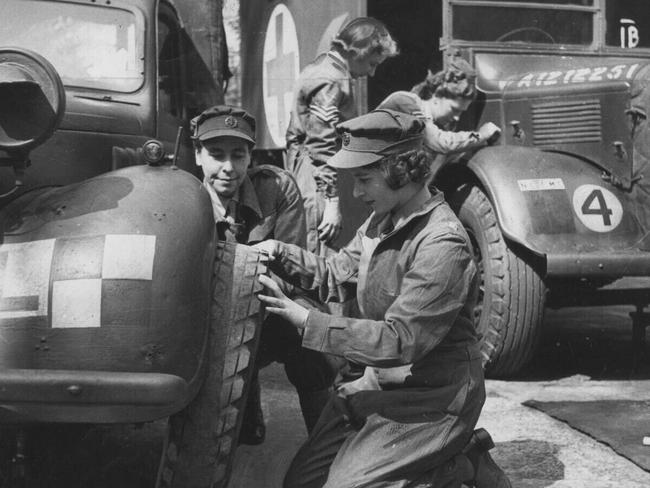
The royal family refused to leave the UK when the war broke out, and Elizabeth and Margaret were moved first to Balmoral in Scotland, then to Sandringham, before they settled in at Windsor Castle.
The young princess was only 14 when the war erupted, but that October, she made her first broadcast to the nation, recording a radio message at Windsor to the children who had been evacuated from London, which was broadcast across the globe by the BBC.
Talking directly to the young evacuees, she urged them to show courage.
“When peace comes,” she said, “remember, it will be for us, the children of today, to make the world of tomorrow a better and happier place.”
“All of us children who are still at home think continually of our friends and relations who have gone overseas — who have travelled thousands of miles to find a wartime home and a kindly welcome in Canada, Australia, New Zealand, South Africa and the United States of America.’’
According to the National WW11 Museum in New Orleans, Princess Elizabeth was given the role of honorary colonel of the Grenadier Guards, to symbolise her military involvement in the war effort.
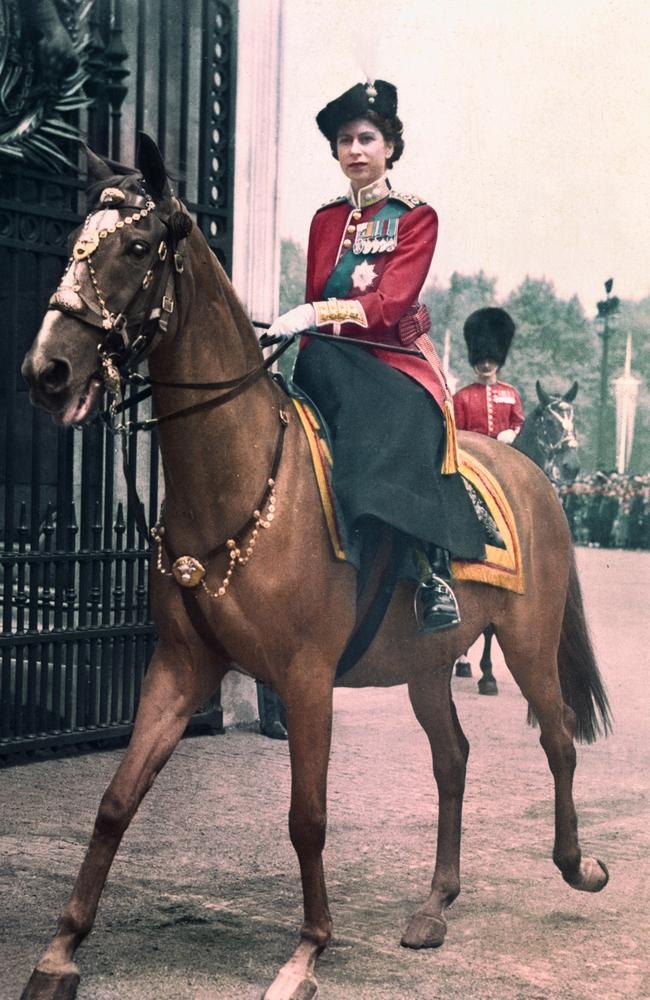
In 1944, when she turned 18, she joined the women’s branch of the British Army, known as the Auxiliary Territorial Service. The WW11 Museum said King George ensured she did not get a special rank in the Army, and she started as a second subaltern before being promoted to Junior Commander, the equivalent of the rank of Captain.
She began her training as a mechanic in March 1945, undertaking a driving and vehicle maintenance course, where newspapers dubbed her “Princess Auto Mechanic.”
Throughout her training, she worked on the engines of numerous military vehicles and developed a love of driving that she retained all her life, often seen behind the wheel of her Range Rover well after her 90th birthday.
She also remained deeply interested in military strategy, and asked insightful questions of the
military chiefs — generals, field marshals, admirals and air marshals — she came into regular contact with.
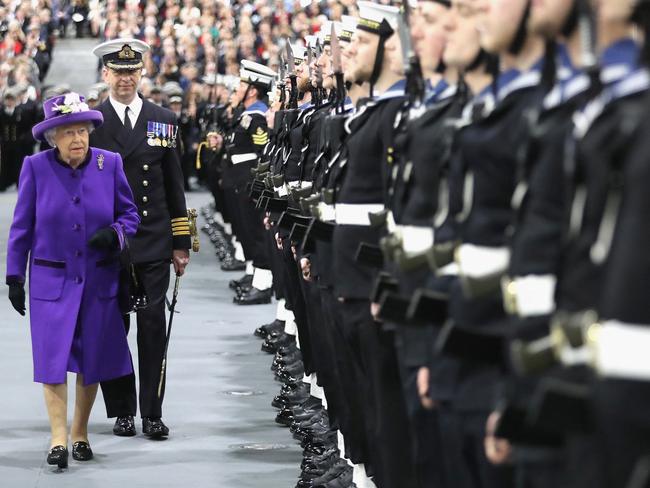
Mr Vickers recalled sitting next to the Queen at dinner in 1999 at the time of the Iraq war, when she remarked “well we may suddenly find a use for the parachute regiment’’.
“It was one of the many things she was thinking about,’’ Mr Vickers said.
He said she had a lot of affection for the armed forces. “She knew where she was with them and they knew where they were with her.’’
When the war in Europe ended in 1945, Princess Elizabeth, dressed in her ATS uniform, and Princess Margaret slipped out of Buckingham Palace and joined the euphoric crowds in the streets. The Queen spoke years later to the BBC, saying “all of us were swept along by tides of happiness and relief ... I think it was one of the most memorable nights of my life,” she said.
The Royal Family’s website states the Queen’s relationship with the Armed Forces began when she joined the ATS in 1945, the first female member of the Royal Family to enlist on a full-time basis.
“The Queen also spends much time meeting servicemen and women of all ranks, and their families, both at home and on overseas trips,’’ it says.





